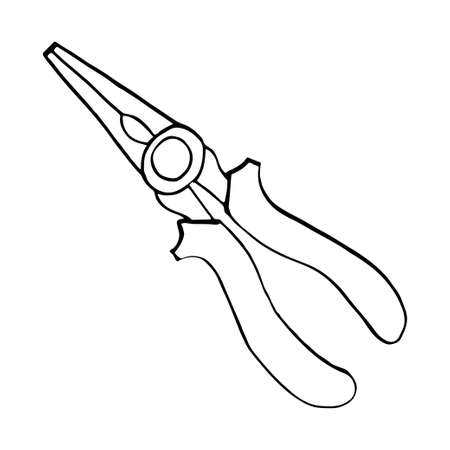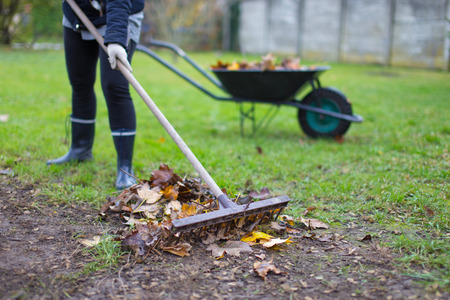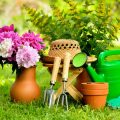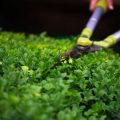Introduction to Shears and Hedge Clippers for British Gardens
Shears and hedge clippers are indispensable tools for anyone tending an allotment or home garden in the UK. Whether you’re maintaining a classic English cottage garden, taming a wild urban plot, or keeping your neatly clipped hedges in order, these tools help shape and sustain the cherished green spaces that define British gardening culture. Typical UK gardens often feature plants like privet, boxwood, yew, lavender, and roses—each requiring regular maintenance to thrive and look their best. Allotment holders also rely on sharp shears for pruning fruit bushes, harvesting herbs, and managing unruly growth. The variety of garden styles across Britain—from formal topiary to informal mixed borders—means that well-maintained shears and clippers are essential for keeping gardens both productive and beautiful. In this article, we’ll explore how sharpening these tools can make a real difference to your gardening success.
Signs Your Tools Need Sharpening
For both allotment enthusiasts and home gardeners across the UK, recognising when your shears or hedge clippers need sharpening is vital. Not only does a sharp blade make gardening easier, but it also helps maintain plant health—especially crucial in our often damp British climate. Here’s how to spot when your tools are getting blunt, what problems may arise from using dull blades, and why regular sharpening is so important.
How to Spot Dull Blades
The first sign that your shears or clippers need attention is a noticeable drop in cutting performance. You might find you need to use extra force or go over the same branch more than once. Jagged cuts on stems and leaves are another tell-tale sign, as healthy plants need clean cuts to avoid disease. Additionally, if you notice your tool is crushing rather than slicing through material, it’s time for maintenance.
Common Problems Caused by Blunt Tools
| Problem | Description | Impact on Garden |
|---|---|---|
| Ragged Cuts | Cuts are uneven and frayed instead of clean. | Increases risk of disease and slows healing. |
| Extra Effort Required | You have to squeeze harder or repeat cuts. | Can lead to fatigue and even injury. |
| Damaged Plants | Stems get crushed or split. | Weakens plants and may cause long-term harm. |
| Reduced Efficiency | Takes longer to complete simple tasks. | Makes gardening less enjoyable and productive. |
Why Sharp Tools Matter in the British Climate
The UK’s weather can be unpredictable—frequent rain means plants are more susceptible to fungal diseases if wounds aren’t cleanly cut. Sharp shears help reduce the risk of infection by making precise cuts, allowing quick recovery. Furthermore, sharp tools are less likely to slip, which keeps you safer during those damp mornings in the garden or on your allotment plot. Maintaining sharpness isn’t just about ease; it’s about nurturing a thriving garden all year round.

3. Choosing the Right Sharpening Tools and Techniques
When it comes to keeping your shears and hedge clippers in top condition, selecting the proper sharpening tools is essential—especially for those tending British allotments or home gardens. Both traditional and modern options are readily available across the UK, each suited to different preferences and garden tool types.
Traditional Sharpening Tools Popular in the UK
Many British gardeners still favour classic methods such as using a whetstone or oil stone. These stones, often made from fine-grained natural materials, provide excellent control and precision. To sharpen with a whetstone:
Step-by-Step: Using a Whetstone on British-Made Shears
- Soak the stone in water (or apply oil if using an oil stone) for several minutes.
- Secure your shears or clippers safely on a stable surface.
- Hold the blade at its original angle (usually around 20-30 degrees for most British garden tools).
- Slide the blade along the stone in smooth, consistent strokes away from your body.
- Repeat on both sides until you achieve a sharp, even edge.
Modern Sharpening Tools for Convenience
If you’re after convenience, diamond files, carbide sharpeners, and sharpening rods are popular choices in UK garden centres. These tools require less preparation and can quickly refresh a dull edge. For example, diamond files work well on harder steel blades commonly found in British-made shears.
Top Tip for Allotment Gardeners
Always check if your chosen sharpener is suitable for the specific metal of your shears or clippers—some older British models may have softer steel that benefits from gentler techniques.
Caring for Your Tools Post-Sharpening
No matter which method you choose, finish by wiping down your blades with an oily rag to prevent rust—a simple habit cherished by generations of UK gardeners.
4. Best Practices for Sharpening: A Practical Guide
Keeping your shears and hedge clippers sharp is essential for both productive gardening and tool longevity. Below, you’ll find straightforward steps and British garden hacks to ensure your tools stay in top shape, while keeping safety at the forefront.
Step-by-Step Sharpening Instructions
- Clean Before You Start: Wipe off dirt, sap, and rust with warm soapy water and a stiff brush. Dry thoroughly to prevent slipping.
- Secure Your Tool: Use a sturdy workbench or clamp for stability. This avoids accidents and allows more precise sharpening.
- Choose the Right Sharpener: For most shears and clippers, a fine flat file or sharpening stone works best. Diamond files are excellent for tougher blades.
- Sharpen with Care: Hold the blade at its original angle (usually 20–30°). Run the file along the edge in one direction only—away from your body. Repeat several times until the edge feels sharp.
- Check Alignment: After sharpening, check that blades meet evenly. Adjust tension screws if necessary for a clean cut every time.
- Wipe & Oil: Remove any metal filings, then apply a drop of light machine oil to pivot points and blade surfaces to prevent rust.
Essential Safety Tips
- Always wear protective gloves and eye protection when sharpening.
- Keep fingers clear of the blade’s path at all times.
- Avoid distractions—sharpening requires focus.
British Garden Hacks for Efficient Tool Care
| Hack | Description |
|---|---|
| Tennis Ball Cleaner | Slice an old tennis ball and use it to wipe sticky sap from blades—quick, easy, and gentle on metal. |
| Shed Storage Tip | Hang tools on hooks rather than storing them on the ground to keep edges sharper for longer and reduce damp exposure. |
| Brewed Tea Bath | If rust spots persist, soak blades in cooled brewed tea—the tannins help break down minor rust without harsh chemicals. |
| Pencil Marking | If unsure about blade angles, mark the bevel with a pencil before filing as a visual guide—simple but effective. |
When to Sharpen?
Aim to sharpen your shears and clippers at least twice per season—once before spring growth begins and again after heavy summer use. More frequent touch-ups may be needed if you notice ragged cuts or increased effort when trimming.
Quick Recap
A tidy edge makes light work of pruning and keeps plants healthier. Regular maintenance, combined with these practical tips rooted in British gardening know-how, ensures your favourite tools last for years to come.
5. Maintaining and Storing Your Tools Between Uses
Looking after your shears and hedge clippers is just as important as sharpening them. A bit of regular care goes a long way to keep your tools in top nick, especially with the unpredictable British weather in mind.
Cleaning After Every Use
After each gardening session, wipe down your blades with a damp cloth to remove sap, soil, or plant debris. For stubborn grime or rust spots, use a wire brush or fine steel wool. Always dry the blades thoroughly—dampness left on metal encourages rust, which is a common nuisance in the UK’s damp climate.
Oiling for Longevity
Apply a light coating of oil (linseed oil works well) to the blades and moving parts. This not only prevents rust but also keeps everything moving smoothly. Pay extra attention before storing tools over winter, when condensation can build up in sheds and garages.
Sharpening Checks
Check the sharpness regularly, even between big maintenance sessions. If you feel any drag or spot nicks on the blade, give them a quick touch-up rather than waiting for a full sharpening overhaul.
Tightening and Adjusting
Loose bolts or screws can make shears wobbly and unsafe. Periodically check all fixings and tighten as needed using the appropriate spanner or screwdriver. Well-secured tools are safer and more effective.
Best Storage Practices for UK Gardens
The best place to store your garden tools is somewhere dry and cool—think shed, garage, or an outdoor storage box with a waterproof seal. Avoid leaving shears or clippers outdoors; exposure to rain and frost can quickly damage even good-quality steel. Hanging racks or tool hooks are ideal for keeping blades off damp floors and reducing clutter.
A Handy Tip:
If you want extra protection against moisture, fill a bucket with sand mixed with a little oil and plunge your tools in after cleaning. This old allotment trick keeps blades clean, oiled, and ready for action.
By adopting these simple routines, you’ll ensure your shears and hedge clippers remain sharp, safe, and ready for another season of satisfying work—no matter what the British weather throws at you.
6. Expert Tips from British Gardeners and Allotmenteers
Benefit from local wisdom: expert recommendations and real-life advice from experienced British gardeners and allotment holders can make all the difference when sharpening your shears and hedge clippers. Many seasoned allotmenteers in the UK suggest starting with a thorough clean—removing sap, soil, and rust before any sharpening begins. This not only protects the metal but also ensures a smoother, safer cut.
Choosing the Right Sharpening Tools
British gardeners often favour a simple flat file or whetstone, both widely available at local garden centres and hardware shops. A popular tip is to use a small hand-held sharpener for curved blades, as found on many traditional English secateurs. Always sharpen away from your body, following the natural angle of the blade, which is usually around 20-30 degrees for most British-made shears.
Frequency and Seasonal Care
Regular maintenance is key. Most gardeners recommend inspecting and lightly sharpening your tools at the start of each season—especially after winter storage or before the summer rush on the allotment. Hedge clippers used frequently during peak months may benefit from a quick touch-up every few weeks.
Oil and Storage Wisdom
After sharpening, wipe down your blades with an oily rag—many British allotmenteers swear by linseed oil or even a dab of 3-in-1 oil. This prevents rust in the famously damp UK climate. Store tools in a dry shed or hang them up to keep edges keen and handles rot-free.
Troubleshooting Common Issues
If you notice nicks or burrs on your blades, British experts advise gently smoothing these out with fine-grit sandpaper or a diamond file. For sticky sap, try using a drop of white spirit followed by a rinse in soapy water—an old allotment trick that keeps blades clean without damaging them.
Learning from Community Experience
Don’t hesitate to ask fellow plot holders for advice; many allotments have tool-sharing schemes or informal workshops where newcomers can learn best practices firsthand. The collective knowledge within Britain’s gardening communities is invaluable for keeping your tools—and your garden—in top condition.
7. Troubleshooting Common Sharpening Challenges
Every UK gardener, whether tending an allotment or a small back garden, encounters a few familiar hurdles when sharpening shears and hedge clippers. Let’s address these typical pitfalls and look at practical solutions trusted by seasoned British gardeners.
Rusty Blades
Rust is a frequent foe in the damp British climate. To tackle rust, start by scrubbing the blades gently with wire wool or a stiff brush. For stubborn spots, apply a dash of white vinegar and let it sit before wiping clean. Once the rust is gone, dry thoroughly and apply a light coat of oil to prevent future corrosion.
Dull Edges That Won’t Respond
If your blades remain blunt after sharpening, you may be using the wrong tool or angle. Always use a flat file or sharpening stone suitable for garden tools, maintaining the original bevel (usually 20–30 degrees). Take slow, even strokes along the entire blade length. Sometimes, repeating the process two or three times is necessary for very neglected tools.
Wobbly Handles
Loose handles can make sharpening awkward and unsafe. Check for loose screws or bolts and tighten them with an appropriate screwdriver or spanner. For wooden handles, swelling from moisture can cause looseness; drying them out and applying wood glue before re-tightening often does the trick. Replace broken handles to avoid accidents.
Blade Nicks and Chips
Nicks and chips are common after hitting stones or tough branches. Smooth minor imperfections by filing along the edge until even. Larger chips may require professional grinding—something many UK tool shops offer as a service.
Difficulty Reassembling Tools
After cleaning and sharpening, putting tools back together can sometimes be fiddly. Lay out all parts in order beforehand and refer to your tool’s manual if available. A spot of lubricant on moving joints helps ensure smooth operation once reassembled.
By addressing these issues methodically, UK gardeners can keep their shears and clippers sharp and reliable throughout every growing season.


